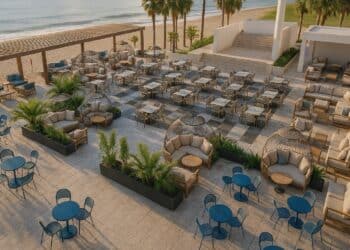Last month, Hotel News ME, travelled to Qatar for HOTEC Middle East 2016, where dozens of suppliers and hoteliers gathered to discuss the latest procurement trends. 
Procurement is the backbone of any operation, but in an industry like hospitality where the requirement for products is far higher than many others, it takes on a life of its own.
The need to embrace intelligent sourcing and connect with suppliers who can bring innovation in addition to value is of paramount importance and at this year’s HOTEC Middle East, the need to meet those business partners was tangible.
Attended by dozens of procurement and hospitality professionals, the four day event included networking, meetings and a panel session hosted by BNC Publishing business division group editor, Melanie Mingas (see box).
Event director for HOTEC Asia and Middle East and SPATEC Middle East and Europe, Stephen Pace-Bonello, speaks to Hotels News ME.
What was the feedback from the 2016 Middle East show?
During the show itself, delegates were very complimentary about the organization and, more importantly, the opportunity that HOTEC offered them to spend quality time with important business contacts. The intimacy of HOTEC affords participants the luxury not just to talk business during the formal, pre-scheduled one-to-one meetings but also to interact during the social programme planned outside of the meeting room. Participants included a good number of new buyers and suppliers – approximately half of the total delegates, in fact – who were at their first HOTEC. Returning suppliers are always keen to connect with new buyers, as well as catching up with those with whom they may already be acquainted. Similarly, hotel owners and operators are keen to discover new products and services on offer. This year’s participant list was a balanced one, and initial feedback shows that this hasn’t gone unnoticed!
What were the main themes you saw at HOTEC Middle East 2016?
I think that, year after year, more and more suppliers are offering different ‘levels’ of products targeting both the high-end and the mid-market (and everywhere in between). As more and more investment in the region goes towards mid-market properties, suppliers have noticed this trend and have taken to offering appropriate products for this sector too. The benefit is, of course, that their target audience is wider as these suppliers are able to satisfy the requirements of a broader range of projects. As hotel groups continue to develop and place importance of the various brands in their portfolios, each with its own distinct requirements, it is refreshing for the buyers to have the option to source for multiple properties, with varying budgets and specs, from the same vendors.
With regards to the panel discussion, how do you believe the introduction of a robust mid-market hotel sector impacts procurement trends?
The panel discussion brought out how important it is for all players to adapt to this trend. As investment in this sector grows, suppliers are keen to get their share of the pie. Those that are able to offer products to meet with the budgets of this sector without compromising on the quality are reaping the benefits of their diversification. Hotel investors and operators look to distinguish their properties from those of the competition and have become more demanding in their quest for good quality, innovative products.



































































